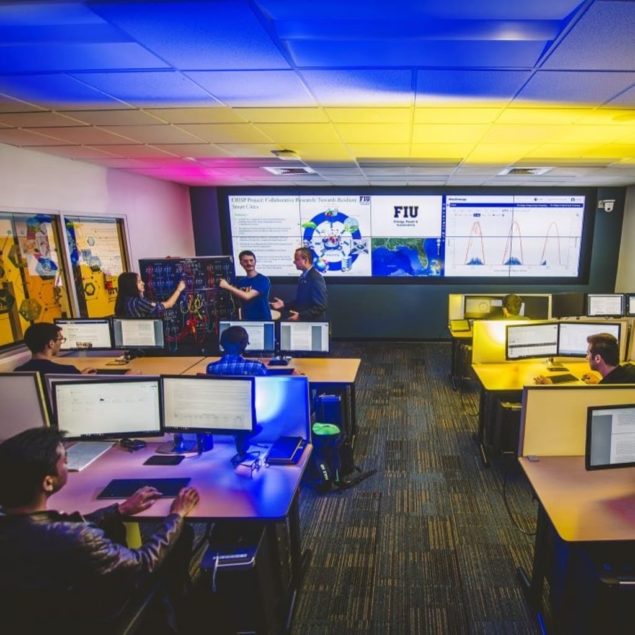|
Getting your Trinity Audio player ready...
|
FIU  Water? Check! Batteries? Check! Flashlights, first aid, canned goods? Check! If you’re a Floridian, you know this checklist by heart. Storm season began June 1 and, as we’ve already seen, it’s a busy one.
Water? Check! Batteries? Check! Flashlights, first aid, canned goods? Check! If you’re a Floridian, you know this checklist by heart. Storm season began June 1 and, as we’ve already seen, it’s a busy one.
Florida Power & Light Company (FPL) has its own checklist to prepare for hurricane seasons, such as conducting an annual storm drill and countless pole inspections and tree trimmings. FPL is also working with FIU on cutting-edge research to protect the reliability of our energy supply during future severe weather events.
This is a project that not only has the potential to revolutionize the grid, it also demonstrates how cross-sector partnerships can result in innovation that benefits us all and provides meaningful opportunities for the next generation. As a professor at FIU’s College of Engineering and Computing and director of FIU’s Energy, Power and Sustainability Group, I have led research into renewable energy systems, large-scale storage, big-data, Artificial Intelligence (AI), electric vehicle systems, grid resiliency and smart grids. The project that my students and I have been developing with FPL is an AI-based microgrid scheduled to launch this fall.
A micro-what? A microgrid is a smaller grid that can transition between grid-connected operations and “islanded” or autonomous operations. In other words, a microgrid can operate independently from the larger grid. To understand the significance of this capability and how its impact extends beyond FIU, it’s important to understand how the larger grid that FPL operates works.
The larger grid is an interconnected system that delivers electricity to our homes, businesses and even college campuses. Because the system is interconnected, when one area of the grid is damaged by a devastating storm or natural disaster, it can cause many of us to lose power. But a microgrid’s ability to operate autonomously changes the game and is an example of how South Florida’s leaders can come together to tackle the unique challenges our region faces, like hurricanes and their impact on our infrastructure.
Should a hurricane damage a substation or cause a tree to knock out a power line, a microgrid can disconnect from the larger grid and operate independently using a decentralized group of local electricity sources to supply power to the buildings or homes connected to it. So, in the event of severe weather, the FIU-FPL microgrid would be able to supply uninterrupted power to our engineering campus.
The microgrid also pairs this reliability with clean energy production, leveraging a 4,400 solar panel array FIU developed with FPL to generate and store renewable power in a large-scale battery (3MW/ 9 MWh) integrated with a Command-and-Control Center and Real-Time Simulation lab spread over 30,000 sq. ft. facility. As a bonus, this solar canopy also provides shade for about 400 parking spaces. The microgrid will use AI and machine learning to optimize microgrid operations while running autonomously.
This technology is in its early stages and, thanks to FPL, my students and I have the opportunity to gain hands-on experience and maybe even produce a few breakthroughs, providing a more resilient energy future in the face of natural disasters.
After all, the goal isn’t just to supply uninterrupted power to an engineering campus; the goal is to deploy this cutting-edge technology to entire campuses, neighborhoods and even small cities. It’s essential for leaders in education, energy and other bastions of innovation to work together to envision a clean and reliable energy supply.
The next generation will be the custodians of our environment, and, when we lead by example, we can shape our future by inspiring the engineers who will advance renewable energy in Florida and make our energy grid even smarter.
 Arif Sarwat is the principal investigator (PI) of the FIU-FPL microgrid and eminent scholar chaired professor at FIU’s College of Engineering and Computing.
Arif Sarwat is the principal investigator (PI) of the FIU-FPL microgrid and eminent scholar chaired professor at FIU’s College of Engineering and Computing.






